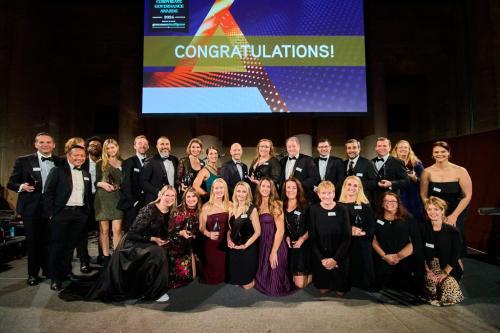A shifting patent landscape in response to judicial rulings and impending legislation calls for clear policies for creation, acquisition and protection of IP assets
June 2014 may prove to be a watershed period for how companies think about protecting their intellectual property assets. On June 12 last year, Tesla Motors chief executive Elon Musk announced on the company blog that Tesla had given up its patents ‘in the spirit of the open source movement, for the advancement of electric vehicle technology’. That same month, the US Supreme Court issued a decision in Alice Corp vs CLS Bank that has significantly weakened the position of patent infringement claimants in the area of business method patents.
These days, intellectual property – whether in the form of patents, copyrights or trade secrets – can constitute a significant portion of a company’s assets and be a key driver of competitive advantage. From a fiduciary standpoint, that’s nothing to sneeze at. It calls for rigorous attention from the company’s board as part of its broader corporate governance duties. It’s anyone’s guess how the discussion in Tesla’s boardroom went, if indeed Musk even consulted the board about the decision. From his statement that ‘it is impossible for Tesla to build electric cars fast enough to address the carbon crisis’, it’s clear Musk hopes that sharing Tesla’s electric car know-how with rivals could jump-start the sustainable car market. If that proves true, and other companies are motivated to start building charging stations and other infrastructure that ends up supporting Tesla’s long-term growth, it would likely eclipse any fiduciary concerns about Tesla’s generosity of spirit in opening up its patents.
To be sure, some observers believe Musk left himself an out by saying that ‘Tesla will not initiate patent lawsuits against anyone who, in good faith, wants to use our technology.’ But he also clarified at the Detroit Auto Show in February that his intent was to make the patents completely free for anyone to use, with no need even for licensing discussions, as reported by the website Techdirt.
Related risks
Outdoor apparel and equipment manufacturer Patagonia made a similar move last August when it decided to share its plant-based wetsuit technology with the industry as part of its commitment to ethical business practices, hoping to reduce the industry’s reliance on petroleum-based wetsuit materials. But as a private company wholly owned by founder Yvon Chouinard, Patagonia isn’t bound by investment rules and can do what it pleases with its intellectual property.
Governance around intellectual property is getting more attention these days because of boards’ heightened focus on risk, which includes risks to assets, says Holly Gregory, partner at Sidley Austin and co-head of the law firm’s global corporate governance and executive compensation practice.
‘Boards need to be focused on whether management has systems in place that are reasonably designed to protect these key assets and protect against risks to the company,’ she notes.
Given that boards’ fundamental duties haven’t changed, the governance considerations around intellectual property aren’t new per se. ‘It’s just that the assets and asset types change, therefore boards need to continually grow their understanding of those kinds of issues,’ Gregory says. She sees a corollary to the need for boards to continually refresh their understanding of risk oversight, as the risks that companies face are changing all the time, especially as technology evolves. ‘It’s not that there are new governance requirements; it’s that boards always have to apply their governance lens to a changing world,’ she explains.
For Gregory, the responsibility for keeping the board informed about critical issues, including asset risk, rests broadly with management, not the corporate secretary alone. ‘I’m not sure it’s actually a corporate secretary role other than to make sure we’re having this discussion regularly,’ she says. That discussion usually occurs within a specific context, such as the risk perspective, she adds.
Creating and acquiring intellectual property
Protecting intellectual property assets starts with ensuring a company owns what its employees think up and create. That requires a process to cover the creation and acquisition of intellectual property, says Scott Killingsworth, a partner at Bryan Cave. ‘That process has to make sure you own the intellectual property you get from your employees or from third parties you pay to create it for you,’ he explains. ‘Then you figure out what mode of protection you might be able to get for it. What’s the most economical way to protect it?’
Although a company generally owns the rights to anything its employees invent or create without the need for a contract, ‘contracts are important to refine the boundaries of what you’re getting and what your rights are and what they’re not,’ Killingsworth continues. ‘It can make a difference whether someone is considered to be hired to invent or not. If you want to make sure you own the intellectual property created by somebody who has a job title that doesn’t include the word ‘engineer’, for example, you might want to make sure you have a technology transfer agreement or an invention assignments agreement with him or her, and then you cover other things like protecting your trade secrets.’
This applies to the output of all employees, not only those hired in an inventive role. ‘Your job title or job description doesn’t always describe what you do every day,’ Killingsworth notes.
Most companies with a serious technology slant to their business use a non-disclosure and invention assignment agreement to cover such matters, including trade secrets and any other confidential information. Companies also need to ensure employees are aware of policies regarding downloading and repurposing material from the internet, such as open source software, Killingsworth adds.
‘You need education, you need awareness, you need policies,’ he explains. Lately, he has seen an increase in ‘serious policy development in companies around the acquisition of intellectual property, the development of intellectual property, and protection, because they’re realizing you can’t count on people to do this according to their common sense.’
Courts shifting in favor of patent infringers
Recent court cases are also changing the power balance between patent holders and accused patent infringers, and companies need to stay abreast of these developments to be able to protect themselves and manage such risk. Patent protection has come under attack over the last five years as the result of a series of cases that have tried to propose various tests for patent eligibility. In its decision on the Alice case, the Supreme Court ruled that abstract business methods are no longer eligible for patent protection unless the methods are tied to the use of a specific technological device.
‘Patent eligibility has been a big trend for the last five years or so, and it’s been difficult to figure out what framework people should use in figuring out patent eligibility,’ says David Vondle, a partner at Akin Gump Strauss Hauer & Feld. ‘The Alice case really put a fine point on the test for patent eligibility.’ Alice crystallizes all the previous court decisions and clarifies the test courts should use to determine whether a business process is eligible for patent protection in the future, he adds.
In the wake of Alice, a company may need to re-evaluate the worth it places on a patent or how much ability it may have to enforce that patent in court, Vondle says. He recommends that companies with software patents they believe are very strong re-evaluate them to see whether they are likely to survive under the current framework of Alice. Over the eight months since the Alice decision, more than 100 patents have had their claims invalidated, and only a handful have survived, Vondle notes.
Alice has also emboldened accused infringers to file many cases with the US Patent Office, requesting a covered business method review, and this has resulted in a high rate of invalidation of business method patents, says Robert King, a partner at Hunton & Williams. ‘It’s much easier as a defendant to invalidate a patent in the patent office than it is in a district court’ and much less expensive, he notes. Another change that works to the advantage of accused infringers is that courts are issuing summary judgments at earlier stages of lawsuits, thus saving defendants a lot of money, King adds.
It’s the ability to get infringement suits thrown out of court on a motion to dismiss that Killingsworth sees as most significant about the Alice decision. ‘Think about how that changes the leverage for settlement,’ he says. ‘Previously, a patent troll [a person or firm that enforces patent rights against accused infringers] would say, I can make you spend a couple of million dollars defending this suit, or you can license the patent from me for $200,000. That gave them a lot of power. They can’t say that anymore – not in the business method and software area – and judges are looking for ways to get these cases off their dockets.’
The few cases since Alice that have been decided in favor of patent holders are those found to have patent-eligible subject matter, which tend to involve very specific features or functions of an internet- based system, says Vondle. For example, in DDR Holdings LLS vs Hotels.com, the patent relates to methods of generating a composite web page that combines some visual elements of a ‘host’ website with content from a third-party merchant. Rather than taking the visitor to the merchant’s website when he or she clicks on the merchant’s ad, the system instead generates and directs the visitor to a composite web page that displays product information from the merchant while retaining the host website’s ‘look and feel’.
The US Federal Circuit appeals court ruled that this is acceptable under Alice because the system created by the patent holder is rooted in internet-based technology, Vondle explains.
The Innovation Act
Congress is also pushing for patent reform that would make life harder for patent trolls. A new version of the Innovation Act introduced in the House of Representatives includes tougher pleading standards for claimants than have been required in the past. Last year, the bill passed in the House but was blocked by Democrats in the Senate and taken off the agenda. King expects the bill to move fairly quickly this year now that the Republicans control both legislative bodies.
Where Alice’s impact was on business method and software patents, ‘the Innovation Act potentially applies to all patents – mechanical, electronic, chemical, pharmaceutical, and so on – and all patent holders, not just trolls,’ says Killingsworth. ‘Like Alice, it shifts the balance of legal power considerably in favor of accused infringers (defendants) and away from patent holders.’
As with any attempt to address a specific kind of abuse by changing a general law like the Patent Act in ways that apply to every case, there is a risk of unintended consequences, Killingsworth warns. ‘What is helpful when you’re defending a frivolous suit by an archetypal patent troll will, by definition, be unhelpful when you’re a legitimate company trying to enforce a valid patent against a competitor that is profiting from your intellectual property.’
The Alice ruling has obvious implications for mergers and acquisitions as well. ‘If the patent portfolio of the target company involves a lot of business method patents, it definitely has questionable value, although a lot of us feel it will eventually swing back the other way,’ says King.
Companies are always looking for ways to knock down the price of an acquisition, and questioning patent eligibility is certainly one argument they can try to use, says Killingsworth. He notes that technology businesses tend to be valued by their income streams rather than by their intellectual property. To the extent that an acquirer believes a target’s business depends on patents that are likely to be invalidated, that’s a risk for the target. Most patents don’t protect much, however, and can be engineered around, he adds.
There is a lot riding on how software assets are valued in M&A transactions. Software accounted for roughly one third of technology M&A deal volume and 26 percent of deal value in 2014. Last year cumulative deal value increased 62 percent to $161.4 billion from 2013, while total deal volume grew 36 percent to 277 deals from 204 the year before, according to Deal Insights. PwC expects software deals to continue to lead technology M&A this year.
Open source code problems
In addition to the decline in value for business method assets, any software assets that can’t be freely commercialized due to licensing restrictions around some of the code they may contain could pose problems for M&A target firms.
It’s increasingly common, as part of the due diligence process in an M&A deal, to scan software assets to detect traces of open source code so that would-be acquirers can more appropriately value a target company’s assets. One of the service providers acquirers go to for this is Black Duck Software, which licenses its tools for scanning software code to companies and provides consulting services that include analysis of a target firm’s code and reports that detail the risks of licensing any such software.
‘Generally, the companies coming to us are buying another company with the intention of commercially licensing the products of that company,’ says Phil Odence, vice president and general manager of Black Duck. ‘It’s usually the case, particularly because the companies being acquired tend toward the smaller end of the scale and tend not to have their management act together so well, that they tend not to have visibility’ with regard to their use of open source that larger firms generally have.
Open source software falls into one of two major licensing categories: permissive and reciprocal. A permissive license providing access to source code allows users to do whatever they want with it, typically requiring only attribution to the code’s author, much like a copyright. Reciprocal licenses, by contrast, carry the proviso that any derivative work created from the software falls under the same reciprocal license. ‘The courts have held that a derivative work can be anything that incorporates that software,’ notes Odence.
Companies worry that they lack the visibility or proper processes to prevent some bit of reciprocal code from getting into something proprietary they’re creating. ‘Anybody can then demand to have access to their source code,’ Odence says. ‘What everyone’s concerned about is that this would compromise their proprietary intellectual property and potentially destroy all the value in their company.'
In the M&A context it's now more common for proactive sellers to seek out Black Duck's services. 'It's worth having Black Duck look at your code prior to inbound interest, or at least prior to diligence, so that you avoid surprises during diligence,’ Odence explains.
To stay on top of the myriad risks around intellectual property, boards need to ask management for regular reports about processes being used to protect these assets. And for companies contemplating following Tesla or Patagonia’s lead, the governance considerations will come down to a business judgment based on a company’s business strategy and philosophy, says Gregory.
‘Certainly the board needs to be comfortable with it,’ she advises. ‘Unfortunately, you can only really judge the success of those strategies years and years down the road, so the board needs to be informed about why senior management thinks a particular approach is of most benefit to the company in the long run, whether it’s openly sharing what would otherwise be proprietary or not.’








